Have you seen a journalist with a man bun before?
Changing attitudes towards appearances in Australian news media
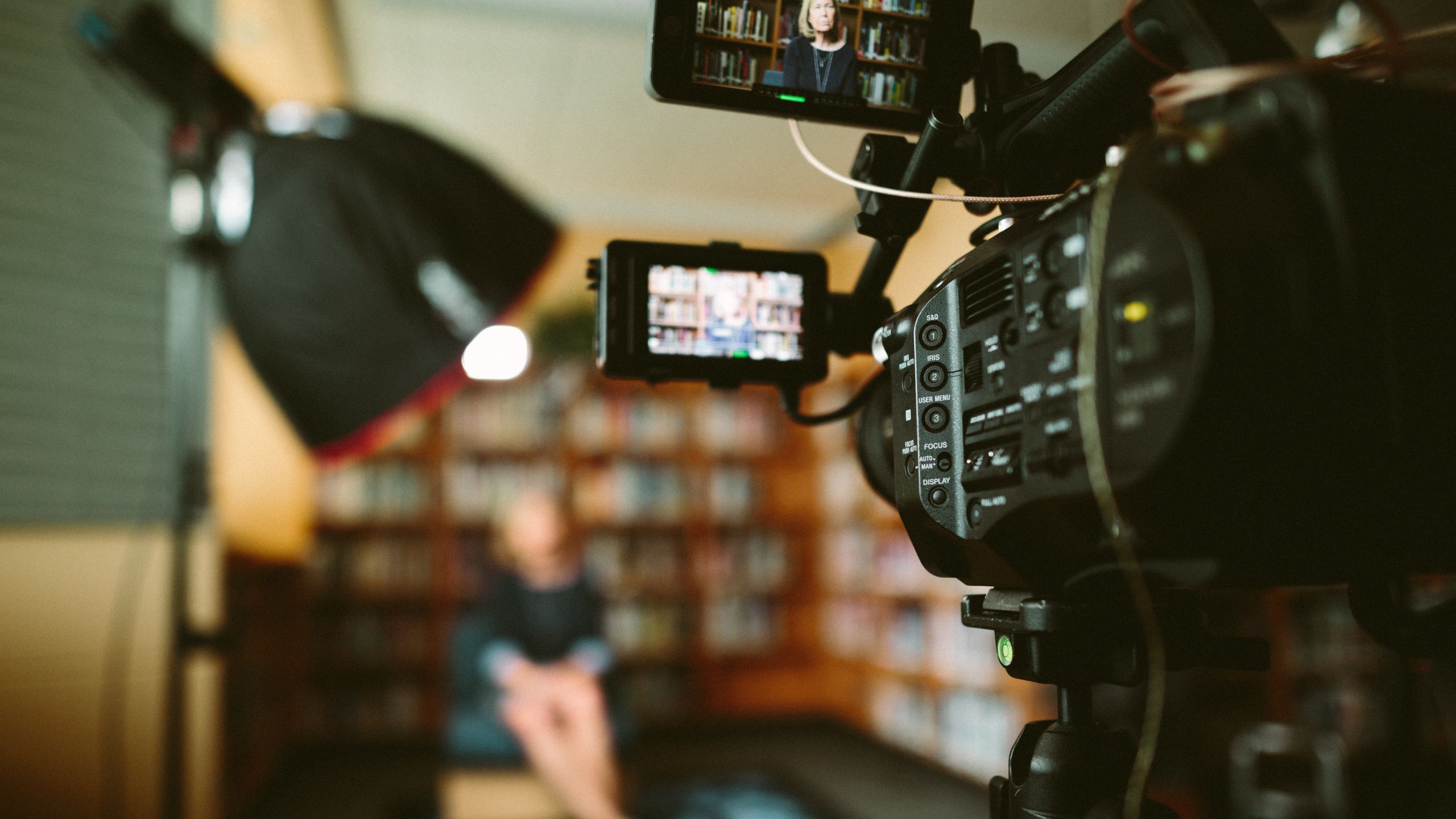
While Jesse Burns was studying journalism at RMIT, like many other students, he worked in the hospitality industry as a barista.
“I definitely looked the part,” he says, complete with tattoos, piercings, and the obligatory man bun.
But he hadn’t expected he would have to change this as he began preparing to enter the news media workforce.
“I had an internship at a news company in Melbourne and I said does that mean I have to change or cut my hair? And their response was ‘have you ever seen a journalist with a man bun before?’
He acknowledges that in the capacity of the particular news organisation he was working for, there was a clear image of the way a reporter should appear.
“[at the time] I was not that,” he said.
Burns says that at least at Australian commercial news companies, they may have still hired him, although not in the position he wanted.
“Your role is essentially looking at you. If you don’t look the part, they’re just not gonna hire you."
Burns is now a reporter at Nine News’ Bendigo team.
He has now taken out his piercings, covered his tattoos, and cut his hair.
News media has traditionally commanded a conservative caucasian look, as seen in Media Diversity Australia’s 2019 report, which found only 11.4% of on screen news and current affairs talent were from non caucasian backgrounds.
In the wider population, these non caucasian groups represent 24% of the Australian population.
Looking at TV networks individually, Channel 7, Channel 9, and Channel 10 each having a majority of presenters from an Anglo-Celtic background.
Other networks such as the ABC and SBS, which has identified itself as serving minority communities, have done better with 14.1% and 76.8% from non-anglo or European backgrounds respectively.
This report drew attention to the severe lack of on-screen representation of Australia’s intensely diverse communities and drew criticism from both within and outside the media industry.
Diverse appearances on screen not only reflect the population's ethnic makeup but also demonstrate to those at home that they are welcome and seen within a particular industry or issue, not just in the media landscape.
This criticism has stirred the beginnings of change and has begun to drive the industry to be more reflective of a diverse society, including those who present themselves differently, such as those who choose “alt” styles, have tattoos, or have piercings.
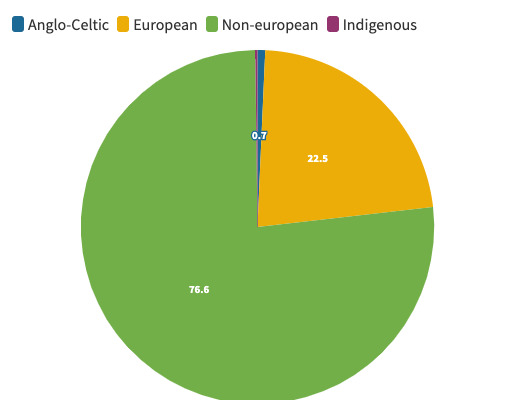
Cultural background of the SBS Network, according to Media Diversity Australia. SBS has self-identified as serving diverse communities and has a charter that mandates reports on cultural diversity. (Note: SBS' NITV programming was not included in Media Diversity Australia's sample)
Cultural background of the SBS Network, according to Media Diversity Australia. SBS has self-identified as serving diverse communities and has a charter that mandates reports on cultural diversity. (Note: SBS' NITV programming was not included in Media Diversity Australia's sample)
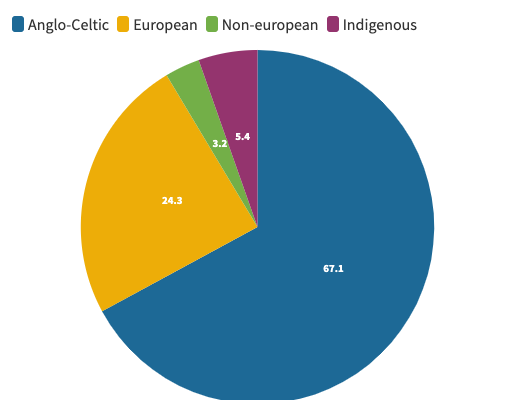
Cultural background at Channel 10, according to Media Diversity Australia. Channel 10 has the largest proportion of people who identify as indigenous Australians out of major networks surveyed by Media Diversity Australia.
Cultural background at Channel 10, according to Media Diversity Australia. Channel 10 has the largest proportion of people who identify as indigenous Australians out of major networks surveyed by Media Diversity Australia.
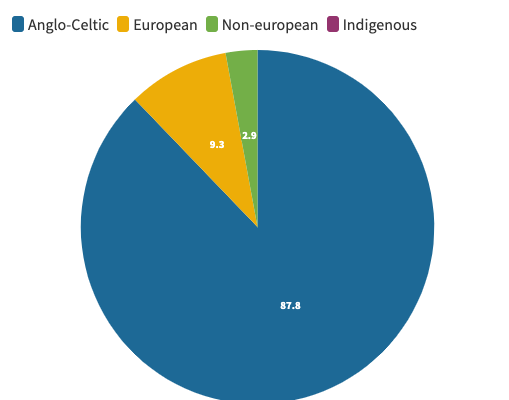
Cultural diversity at Channel 9 according to Media Diversity Australia. Channel 9 has the highest proportion of Anglo-Celtic presenters out of all the major networks surveyed and no Indigenous reporters, commentators, or presentors.
Cultural diversity at Channel 9 according to Media Diversity Australia. Channel 9 has the highest proportion of Anglo-Celtic presenters out of all the major networks surveyed and no Indigenous reporters, commentators, or presentors.
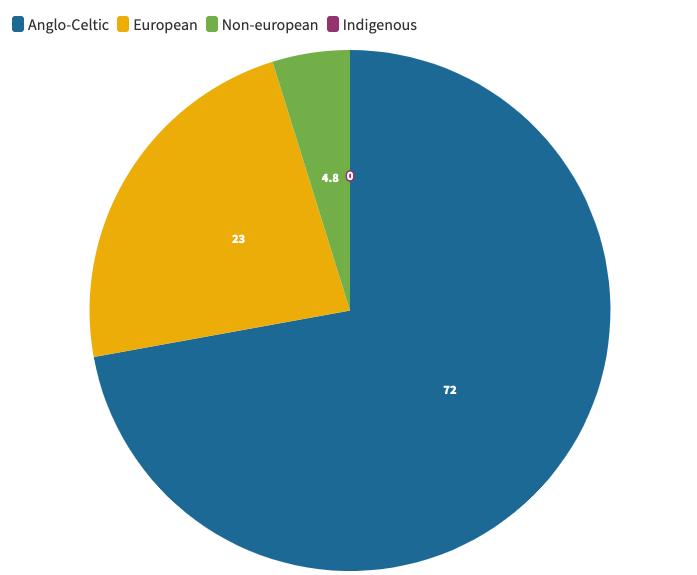
Cultural diversity at Channel 7 according to Media Diversity Australia. Like Channel 9, 7 had no indigenous reporters, commentators, or presenters during Media Diversity's two week research slice.
Cultural diversity at Channel 7 according to Media Diversity Australia. Like Channel 9, 7 had no indigenous reporters, commentators, or presenters during Media Diversity's two week research slice.
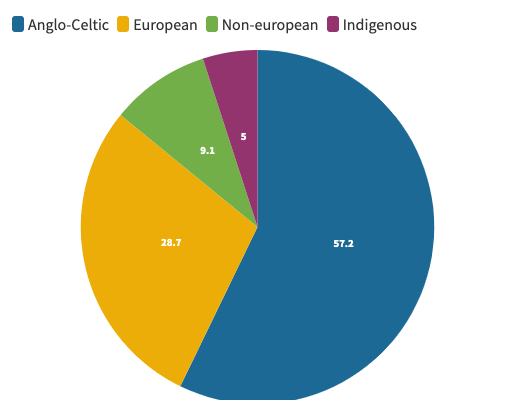
Cultural Diversity at the ABC according to Media Diversity Australia. While still not perfect, the ABC has a more balanced mix of cultural diversity, behind SBS.
Cultural Diversity at the ABC according to Media Diversity Australia. While still not perfect, the ABC has a more balanced mix of cultural diversity, behind SBS.
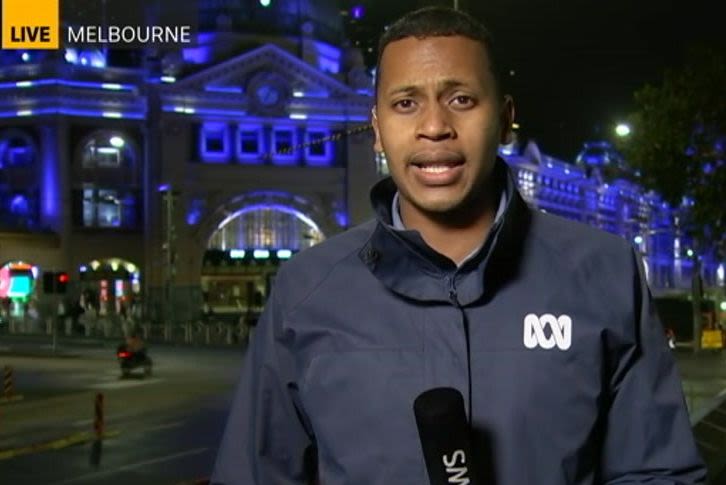
Elias Clure during a live cross at a protest in Melbourne. Image courtesy of the ABC.
Elias Clure during a live cross at a protest in Melbourne. Image courtesy of the ABC.

Jesse Burns, a reporter at Nine News Bendigo. Image courtesy of Nine News.
Jesse Burns, a reporter at Nine News Bendigo. Image courtesy of Nine News.
Elias Clure, a Melbourne-based journalist at the ABC, says while news media should be reflective of the community as a whole, news bosses are still quite conservative when it comes to actual presentation.
“I think when you’re presenting material to an audience on television, you should have a professional look about you,” he says, although this can take many forms, depending on the network and the person in question.
This can mean anything from wearing a suit and tie for men, or natural hair colour and dresses or skirts for women.
Burns says that this attitude is justified from a commercial news organisation point of view as looking “scruffy and not neat” can mean viewers may not take a reporter as seriously.
“From a viewers point of view which is typically quite conservative viewer for these news stations and the one I work for now, I think they trust someone a bit more, conscious or subconscious, who just looks well kept,” he says.
However, this standard of appearance forms part of the historic focus on eurocentric “professional dress."
Clure says that while this is present in Australian television journalism, it is part of the larger issue around eurocentric professional dress that is endemic across a lot of professional services industries.
“I think even news bosses themselves would acknowledge that Seven, Nine, and to a lesser extent Ten have a very certain style that they like their reporters to embody. I think for the most part the reporters embrace that.” he says.
There is no doubt there is a dominance in commercial news networks of conservative-looking, clean-cut, and caucasian people, although Burns says that he is not sure this standard is right.
“From a commercial point of view that may be the most beneficial thing for them. Does that make it right? I’m not sure, I don’t really have the moral gauge on that” he says.
However, this definite need for further diverse appearances also has to be balanced with a flip side of not hiring someone who looks more conservative.
“Should diversity prevent someone like me who really wants to be a journalist and works pretty hard not get a job because I’m a white male?” Burns says.
He proposes that instead of a preference given to more diverse appearances than the current normal, that equal balance and weight should be given to all sides.
Clure agrees, saying that it should be more of a meritocracy.
“People should be brought in on the basis of their talent, not how they look” he says.
As an ABC journalist, Clure considers himself to have quite a lot of freedom in how he can dress and appear on camera, including the choice about what kind of suit to wear and whether to wear a tie or not.
Simple things like putting your own spin on a suit, or choosing a particularly patterned tie is how Burns likes to “add his own character” to what’s currently expected of his appearance. Mr Burns also acknowledges that standards are certainly different for male and female reporters.
“I think females probably have a few more expectations set upon them in terms of what they need to wear, how they should look, so I think its a bit different for men than it is for females…[its about] looking respectable, looking as though you are respected,” he says. “I think there are more parameters females have to work within unfortunately.”
However, Burns does find it interesting that men are not allowed to wear earrings on screen, but women are.
When it comes to tattoos in particular, Clure thinks their presence on screen would be surprising to a traditionally more conservative tv news media audience and viewership.
“Media in that respect is quite similar to law, it would be quite rare to see someone get up in courtroom and have a full sleeve of tatts” he says.
Dr Mair Underwood, an anthropologist and lecturer in social science at The University of Queensland, says that while tattoos are becoming more accepted in society as a whole, she has never seen a tattooed on screen reporter.
She has written about tattoos and their place within tattoo-focused communities, as well as in society as a whole.
“I would be, and I’m a tattoo researcher, I would be taken aback in surprise if I saw someone with a visible tattoo in that industry because that’s not what I’m used to seeing” she says.
She says that the historical connotations of the practice still make it somewhat taboo due to the symbolic baggage.
“It had this sort of symbolism, that’s what made it cool and made it rebellious,” she says in regards to why people got tattooed in the past.
Traditionally, tattoos were done by criminal groups to signify membership or particular actions, or by sailors and military to denote achievements or ward off ill luck.
As a lecturer in the 1990s, she made the local newspaper for no other reason than having a position as a university lecturer and having “small, girly tattoos.”
“It was that radical” she says.
“It became more of a middle-class practice than a lower class practice. It opened up to this broader cross-section of the community and was a result, more of us see it and more of us know people with tattoos.”
According to Dr Underwood, this is one of the historical drivers for past and current increases in tattoos amongst younger people, especially in the 18-24 year old age group.
However, she has also theorised that it has become more fashionable to be tattooed in this age group, as well as being affected by changing body ideals.
“I wonder sometimes if it is a narrowing of body ideals that everyone’s gotta have this sort of certain look, it's a way you can express some individuality” she says.
That’s not to say that younger people can’t be prejudiced or still hold what could be considered outdated opinions about tattooed individuals.
As part of one of her classes at The University of Queensland, she would ask the room what a tattooed woman was like, before having shown the class she was tattooed herself.
She often received responses like “cheap”, “trashy”, or “slut”.
And this was only five years ago.
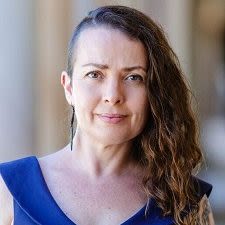
Dr Mair Underwood is a tattoo researcher and lecturer in social science at The University of Queensland. Image courtesy of The University of Queensland.
Dr Mair Underwood is a tattoo researcher and lecturer in social science at The University of Queensland. Image courtesy of The University of Queensland.
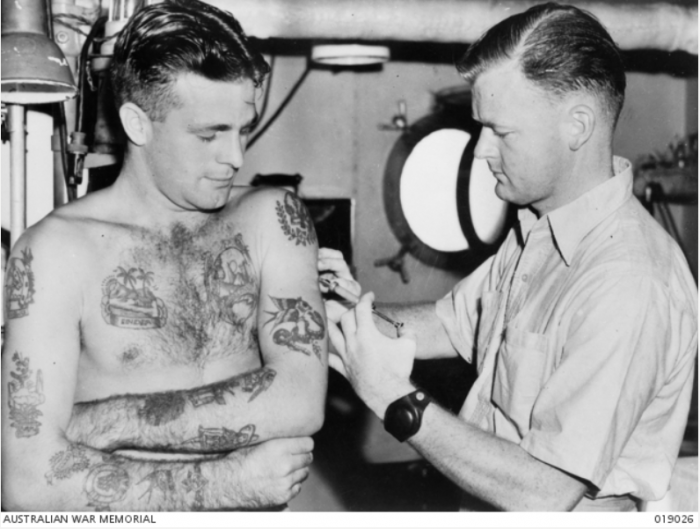
Able Seaman John Paterson in 1945, showing his tattoos that were traditionally the realm of sailors, bikers, and criminals. Photo from The Australian War Memorial.
Able Seaman John Paterson in 1945, showing his tattoos that were traditionally the realm of sailors, bikers, and criminals. Photo from The Australian War Memorial.
On the flipside, the same “otherness” that tattoos can provide can also alienate younger news media professionals, who are more likely to be tattooed or dress alternatively.
Similar to Clure, Dr Underwood acknowledges that while tattoos are becoming more accepted in society as a whole, the news media industry does take a more conservative approach.
She proposes that similar to higher-end shopping and stores such as David Jones, news media requires a more conservative dress than normal due to their customer and consumer base.
“Certain industries are about presenting a certain image and that image might be conservative or trying to appeal to a broad audience, and tattoos might not fit with that” she says. “It's why you’re never gonna see heavily tattooed women behind the counter at David Jones.”
But would a tattooed newsreader be considered less authoritative and informed than one without tattoos?
A 2005 study published in the research journal Psychological Reports, found that when asked, people were more likely to consider someone who did have tattoos to be less credible than those who do not.
Again, this does come down to the social baggage and past perceptions that people have of tattooed or alternative people, due to where these practices have come from and who started them.
Similar to the visibility of LGBTQ+ people on screen, it is about exposing the public to those with tattoos and piercings in order to reduce the stigma and increase understanding.
It could wind up being even more effective than traditional de-stigmatisation methods as the same past connotations that have held people with tattoos back can be used in reverse to legitimise them.
But does this have a place in how our future news media professionals would look like?
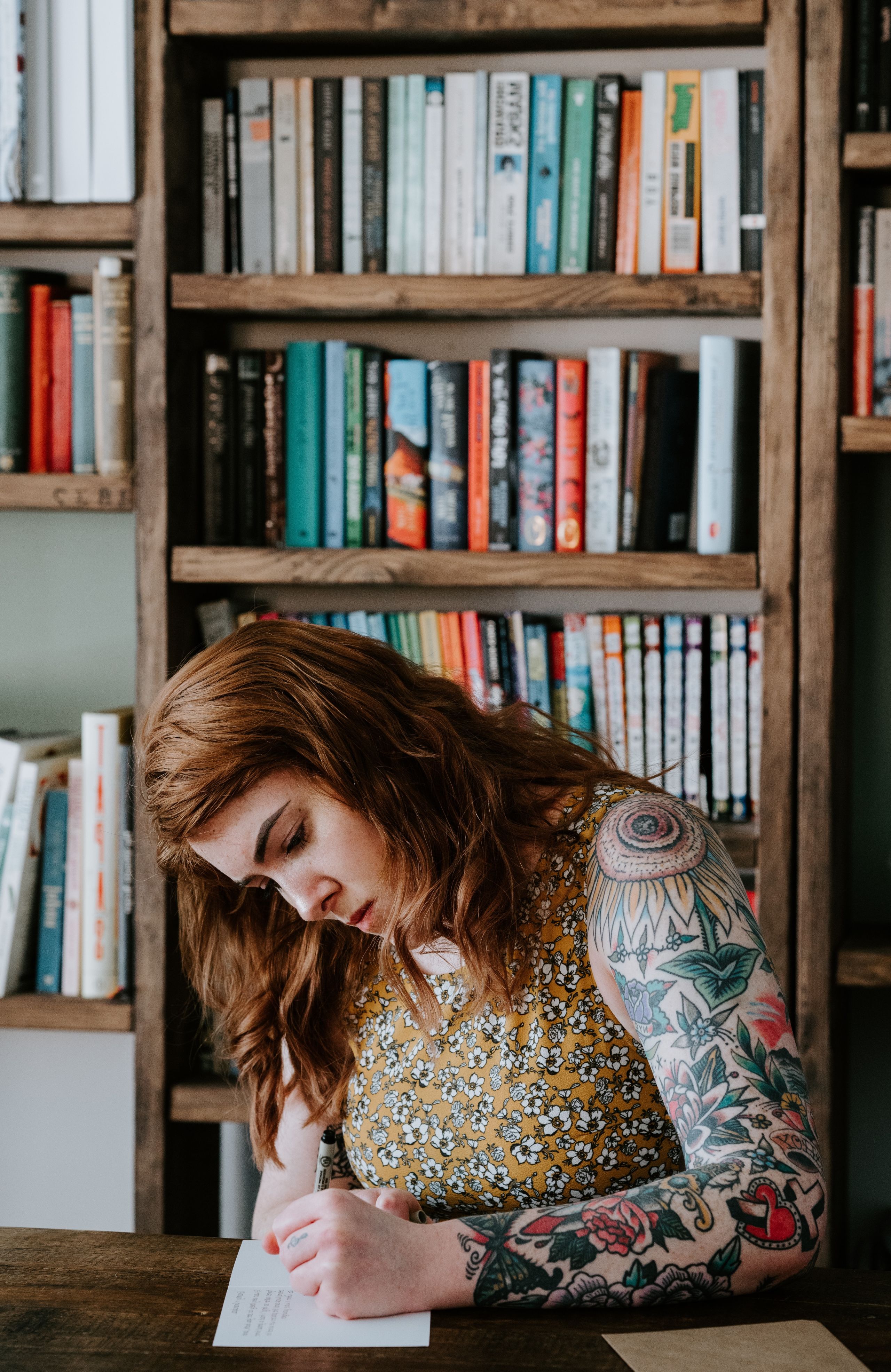
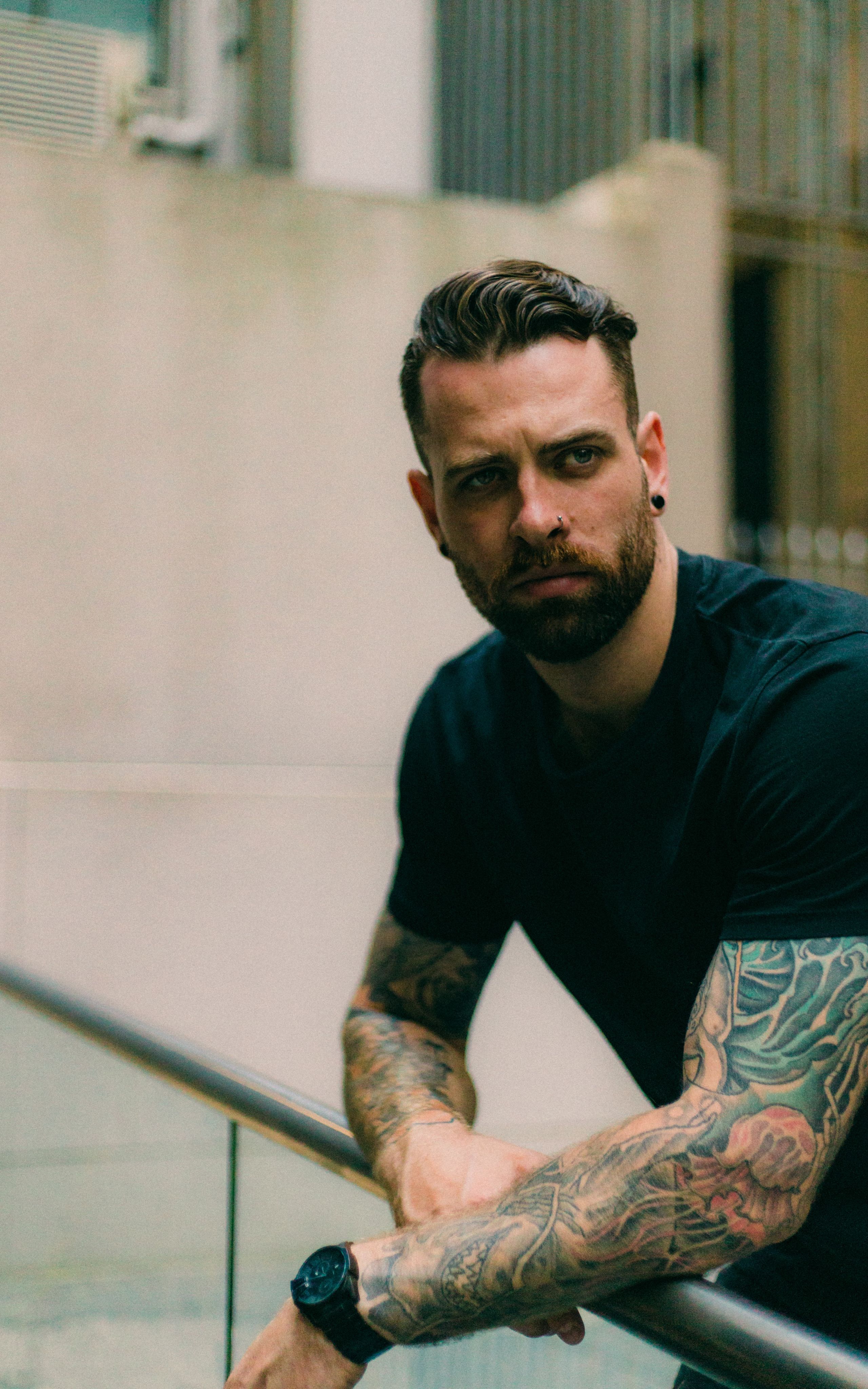
“I would hate to think a tattoo would hold you back from being an incredible journalist" Clure says.
He says that while there is definitely a place for tattooed and pierced individuals at news organisations like the ABC and SBS, he isn’t so sure about how well they would suit commercial stations.
“People should be comfortable in their own appearance and feel comfortable that if they have made a life decision, like getting a tattoo or having a piercing and that’s the way they express themselves, they should not feel as if it disadvantages them in some way,” he says.
He also says that we will “undoubtedly” see more reporters and journalists like this on commercial and public stations in the future.
“If someone has a tattoo on their arm that viewers can see, who cares really, who cares unless it says f**k everybody I don’t think people are gonna be offended by it.”
Burns says that there is definitely room for tattooed presenters on screen, even though at this stage in societal acceptance towards tattoos, he still has to cover them up.
“I don’t think the public is at a stage where they could accept that yet ... It could definitely change, but it might be a hard change,” he says.
Because journalists and reporters have been historically considered highly informed and authoritative, a tattooed journalist would elevate the position of tattoos by simply showing them on-screen and being themselves.
“Seeing those people who we turn to for information, people that are respected in the community, it would have more of an impact than just seeing large numbers of tattooed people in the places you’d expect them to be” Dr Underwood says.
Tattooed, pierced, and alternative people would also fit into the slightly more niche news media market. In the meantime, especially when it comes to areas such as music journalism, sport journalism, and alternative media, especially as the environment evolves.
In the future, holdovers to today’s mindset towards appearances could include some commercial networks, political reporting, and hard news reporting, mostly due to the surviving conservatism that pervades these reporting types and environments, making these sectors more resistant to change.
As more younger people are tattooed and embrace alternative styles, newsreaders and journalists who represent them would therefore also show a broader cross-section of the community as a whole.
We might even see a journalist with a man bun.
Notable Sources
Seiter, John S, and Hatch, Sarah. "Effect of Tattoos on Perceptions of Credibility and Attractiveness." Psychological Reports 96.3_suppl (2016): 1113-120. Web.
Arvanitakis, J., Cage, C., Groutsis, D., Kaabel, A., Han, C., Hine, A., Hopkins, N., Lattouf, A., Liu, I., Lo, I., Lumby, C., Rodrigues, U., Soutphommasane, T. and Umesha Weerakkody, S., 2020. Who Gets To Tell Australian Stories?. [online] Media Diversity Australia. Available at: https://www.mediadiversityaustralia.org/wp-content/uploads/2020/08/Who-Gets-To-Tell-Australian-Stories_LAUNCH-VERSION.pdf [Accessed 27 September 2020].
https://www.news.com.au/entertainment/tv/australian-audiences-are-let-down-by-tv-networks-lack-of-diversity/news-story/53ca210f589f0e7bc01af4b3c27e1205
Image Credits
Man in Black Crew-neck Top // Ralph Rabago via Pexels
Redhead woman writing a letter// Annie Spratt via Unsplash
